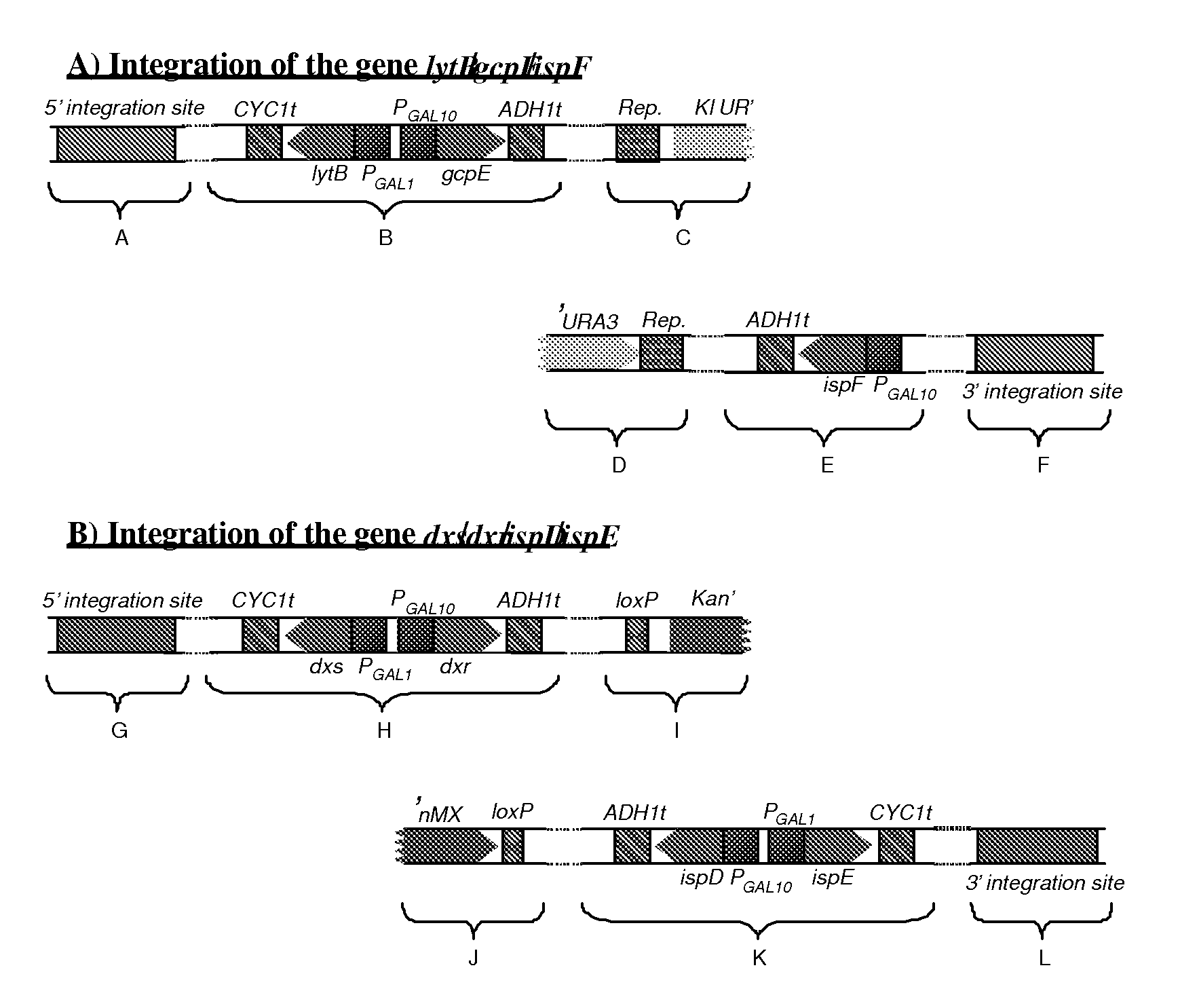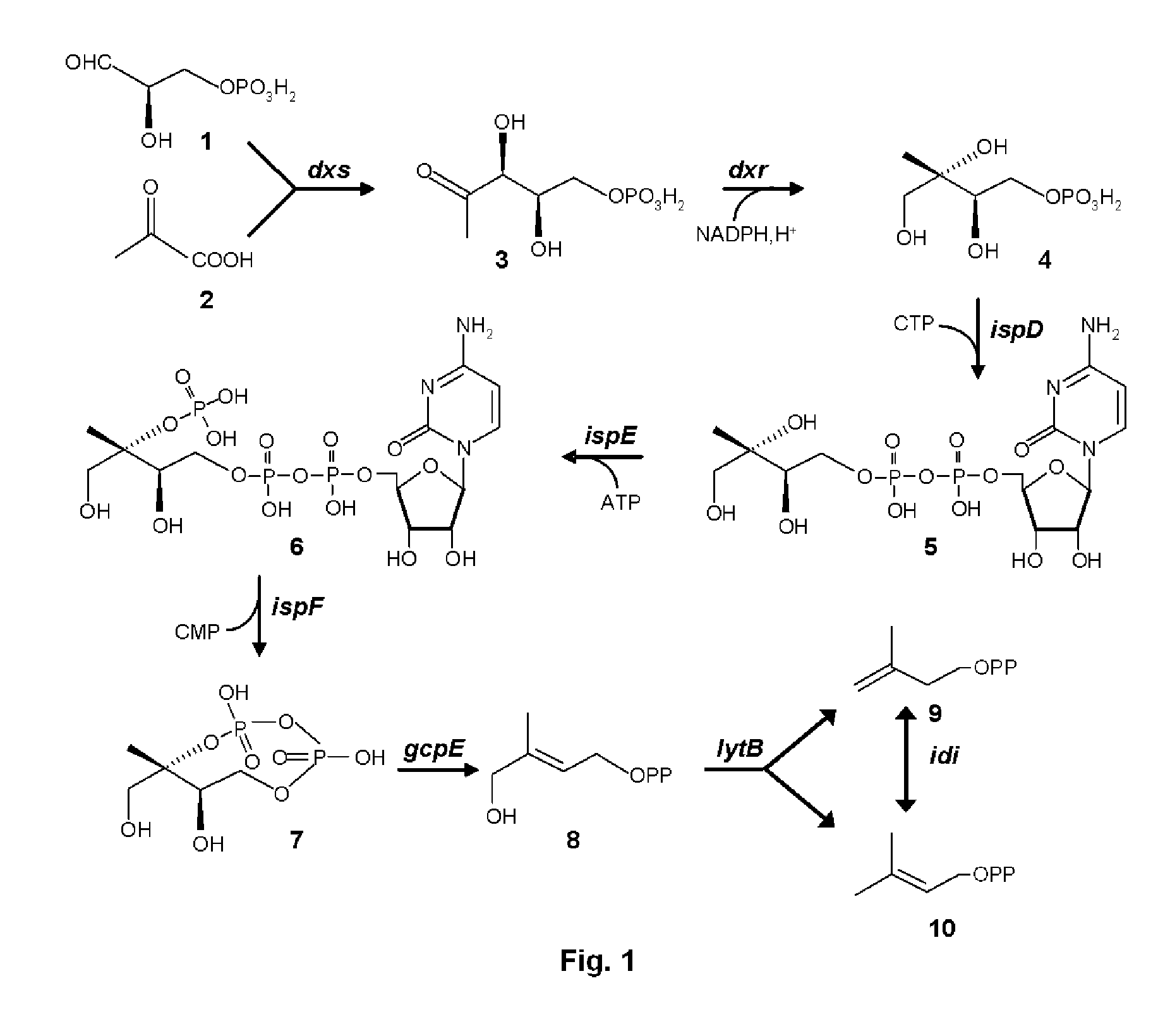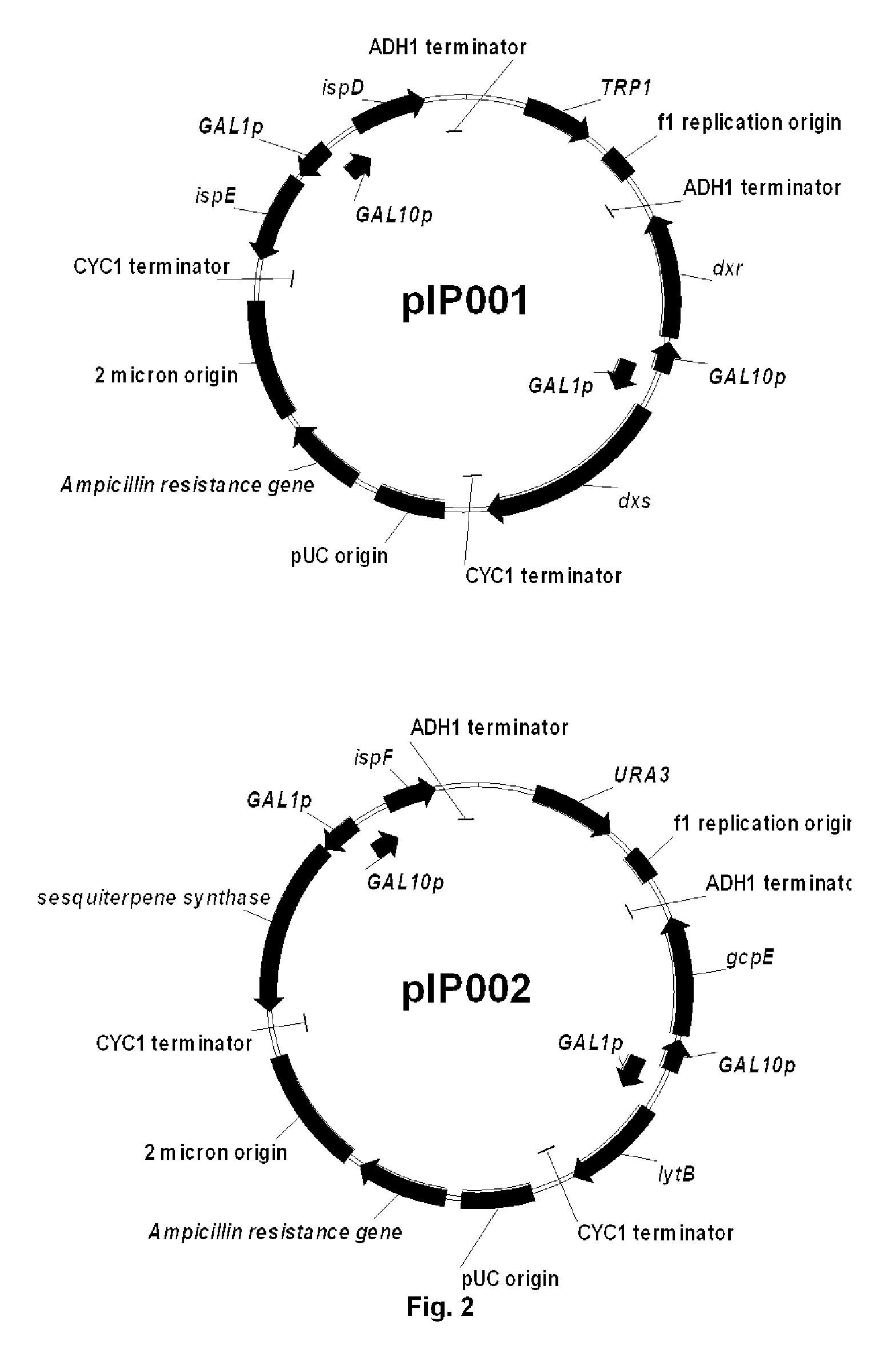Method for producing terpenes and MEP-transformed microorganisms therefore
a technology of terpenes and microorganisms, applied in the field of microorganisms, can solve the problems of low yield, high cost, and cases not economically viable, and achieve the effect of high production of terpene compounds
- Summary
- Abstract
- Description
- Claims
- Application Information
AI Technical Summary
Benefits of technology
Problems solved by technology
Method used
Image
Examples
examples
[0107]The following examples are intended to illustrate the invention without limiting the scope as a result. The percentages are given on a weight basis unless otherwise indicated.
Examples 1-4
[0108]Genes dxs, dxr, ispD, ispE, ispF, gcpE and lytB genes were amplified from E. coli genomic DNA by PCR using the primers listed in Table 1.
[0109]Terpene synthases encoding genes, in particular, genes encoding patchoulol synthase (PatTps177, GeneBank accession No. AY508730), cubebol synthase (GFTpsC, GenBank accession No. CQ813505) and valencene synthase (GFTpsD, GenBank accession No. CQ813508) were amplified from plasmid pET11a or pET101 containing these genes and using the primers listed in Table 4. The sequences of these terpene synthases, as well as the isolation of the respective genes, and the construction of the above mentioned plasmids are disclosed in WO05 / 052163, WO05 / 056803 (patchoulol synthase) and WO04 / 031376 (valencene and cubebol synthase).
[0110]The PCR conditions were in acc...
examples 1-4
, Part (b)
[0116]The remaining genes, dxs, ispE, gcpE and a selected terpene synthase where inserted each to one of the aforementioned plasmids (pIP020, 018, 009) by classic cloning or the gap repair method as follows.
[0117]The gcpE, valencene synthase and cubebol synthase PCR products were cloned following the scheme below:
[0118]
TABLE 2PCR-productCloning plasmidResulting plasmidgcpEpIP009 (lytB in pESC-URA)pIP008Valencene synth.pIP016 (ispF in pESC-TRP)pIP015Cubebol synth.pIP016 (ispF in pESC-TRP)pIP014
[0119]PCR products and plasmids were digested with the restriction enzymes indicated in Table 1 or Table 4, respectively, purified, in vitro-ligated, followed by transformation of E. coli, selection of transformants and verification of transformants by sequencing of expected plasmids exactly as indicated for Examples 1-4(a) above.
[0120]The gap repair method was used to clone dxs into pIP020, ispE into pIP018 and a patchoulol synthase into pIP016 to obtain plasmids each comprising two ...
example 5
Plasmid Combination by in vivo Homologous Recombination in Saccharomyces cerevisiae (Gap Repair)
[0127]To reduce plasmid instability and facilitate further integration of the genes in Saccharomyces cerevisiae genome, the 4 plasmids were combined together, two by two, to end up with 2 main plasmids: one bearing dxs, dxr, ispD, ispE (pIPO01) and the other bearing gcpE, lytB, ispF and a sesquiterpene synthase gene (in the case of valencene synthase, this plasmid is named pIP002). Combination of the different plasmids was realized by gap repair in S. cerevisiae (DeMarini et al, 2001, BioTechniques 30:520-52).
[0128]To construct plasmid pIP002, the piece of DNA containing ispF, valencene synthase encoding gene, GAL1 and GAL10 promoters, CYC1 and ADH1 terminators (pIPO15) was amplified by PCR using the primers pfus_grf and pfus_grr (Table 1). The resulting PCR products were purified using the High Pure PCR Product Purification Kit (Roche Applied Science). The plasmid pIP008 (pESC-URA contai...
PUM
| Property | Measurement | Unit |
|---|---|---|
| dry-weight | aaaaa | aaaaa |
| dry-weight | aaaaa | aaaaa |
| pH | aaaaa | aaaaa |
Abstract
Description
Claims
Application Information
 Login to View More
Login to View More - R&D
- Intellectual Property
- Life Sciences
- Materials
- Tech Scout
- Unparalleled Data Quality
- Higher Quality Content
- 60% Fewer Hallucinations
Browse by: Latest US Patents, China's latest patents, Technical Efficacy Thesaurus, Application Domain, Technology Topic, Popular Technical Reports.
© 2025 PatSnap. All rights reserved.Legal|Privacy policy|Modern Slavery Act Transparency Statement|Sitemap|About US| Contact US: help@patsnap.com



